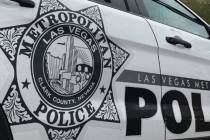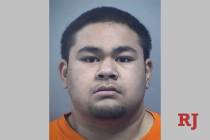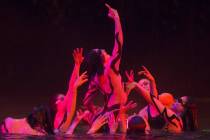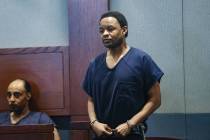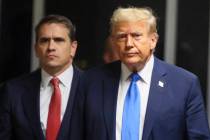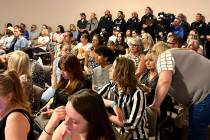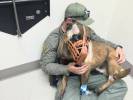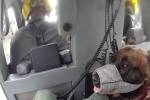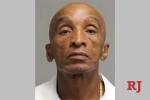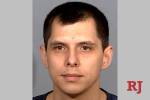Critics demand action on disproportionate shootings of blacks
Las Vegas police were involved in 17 shootings in 2003. Ten subjects were black, an unusually high number even for a department that historically shoots a disproportionate number of minorities. None of the officers were black.
That year, Clark County Sheriff Bill Young and Undersheriff Doug Gillespie formed a task force aimed at improving relations between the Metropolitan Police Department and minorities. One goal of the Multi-Cultural Advisory Council has been to increase officers' racial sensitivity so they can more effectively police minority neighborhoods and reduce violent confrontations.
The initiative has yielded few tangible results in a region where less than 10 percent of the population is black yet 32 percent of people shot at by police since 1990 were black.
Gillespie, who was elected sheriff in 2006 , said the council has benefited both the department and the community: "It may not get into the brass tacks of writing policy, but it has provided me in the five years I've been sheriff with some good insight into how we operate as an organization."
In the two years after the council's formation, shootings of black subjects dramatically fell. But they spiked again in 2006 and 2007. According to Las Vegas police figures, 40 percent of shootings by police between 2003 and 2008 involved blacks. Department data show blacks are also overrepresented both as crime suspects and as crime victims.
In the past 20 years, 39 percent of Las Vegas police shooting subjects were white, 32 percent were black, and 26 percent were Hispanic. Those breakdowns were about the same for shootings over both decades studied. Nearly half of all shootings of unarmed people since 1990 involved black men.
In a national study of justified homicides, the U.S. Bureau of Justice Statistics determined that 35 percent of people killed by police in 1998 were black, down from 49 percent in 1978. The study did not look at nonfatal shootings.
This suggests the racial makeup of subjects shot by Las Vegas police is in line with national figures.
But that doesn't mean the department is colorblind. A 2001 Nevada attorney general's office report on treatment of people during routine traffic stops showed that Las Vegas police handcuffed black motorists at a far higher rate than others.
Every shooting has its own set of circumstances, so raw numbers don't necessarily explain whether a department is acting more aggressively toward one group than another, but the frequency with which Las Vegas police shoot blacks concerns community leaders.
Richard Boulware, a member of the executive board of the Las Vegas chapter of the NAACP, said the attorney general's report and the Review-Journal's findings show a troubling pattern.
"What bothers me when I hear numbers like these is the failure to follow up on this information," Boulware said. "Where is the further investigation into these numbers? Where is the further investigation into police tactics?"
Boulware said the advisory council brings police and community leaders together but doesn't have authority to make changes.
"Dialogue is just the first step to change," he said. "We've had the dialogue. Now it's time for change."
Other police departments, most recently Miami's, have been subject to Department of Justice "pattern and practice" investigations that look for racial bias by police. Las Vegas has never had one.
Allen Lichtenstein, general counsel of the American Civil Liberties Union of Nevada and an advisory council member, said he is troubled by the frequency of deadly force used in minority communities.
"I don't think anyone would dispute that those numbers are high considering the size of the (black) community here," Lichtenstein said. "There are things that could and should be done to lower the number, including better training, better supervision, and better relationships with minority communities."
In another effort to address these issues, Las Vegas police recently commissioned a study by the Consortium for Police Leadership in Equity, a research group based at the University of California, Los Angeles. The group is midway through a two-year process.
Lichtenstein said efforts to recruit black officers have been hampered by lingering mistrust of police in Las Vegas. Blacks account for only 7 percent of department officers.
Gillespie said the department is "continuously looking to diversify the department" but is currently not hiring. He pointed to his department's recent involvement in an award-winning effort to reduce gun violence in West Las Vegas as evidence of commitment to helping minority communities.
"We're working on those relationships, but we're not where we need to be," Gillespie said. "It will always be a work in progress."
Alan Maimon is a Review-Journal special correspondent.









